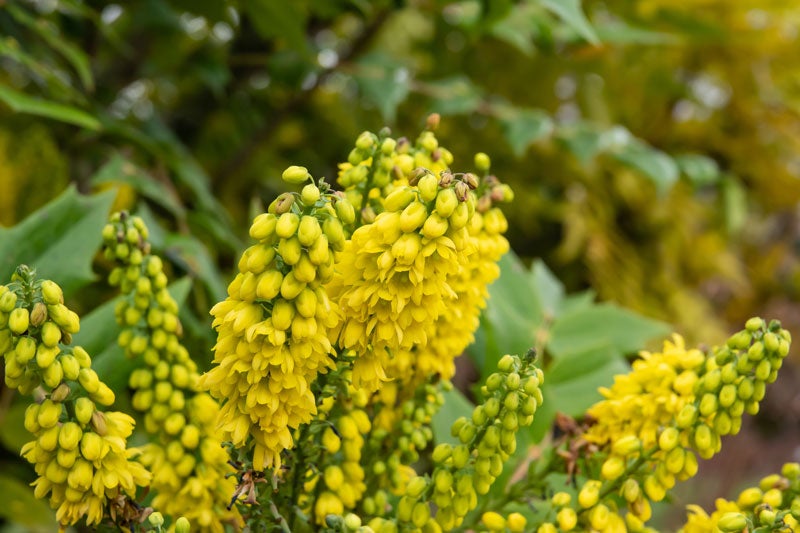Leatherleaf mahonia delivers a lot year-round
Published 4:54 pm Thursday, February 6, 2020

- Leatherleaf mahonia flowers in bloom in winter. -- Courtesy Shutterstock
|
Getting your Trinity Audio player ready...
|
By Kristi Hendricks
Could you possibly ask more of a landscape shrub than to display attractive foliage year-round and live up to a maintenance-free reputation? Yet the Tidewater home gardener can expect that level of service and even more from the leatherleaf mahonia (Mahonia bealei).
Fragrant, lemon yellow flower racemes, drooping 3-6”, cloak this broadleaf evergreen from winter through early spring. Spent blooms are soon followed by waxy green, grape-like fruit clusters that turn showy blue-black in late spring. Lustrous, glossy foliage takes on a bronze hue in autumn after the first frost transitions the mahonia’s beauty from season to season.
On mild, sunny days in winter, the honey and native bees flock to the mahonia blossoms for much needed but scarce pollen and nectar as little else is blooming in the Zone 7b garden. When the fruits ripen, all manner of fruit-eating birds, such as mockers and cedar waxwings, come a courting for true-blue nutrition. Whitetail deer, thankfully, keep a safe distance at all times from this shrub given its prickly leaves.
Another useful feature of the mahonia is this plant’s habit of self-mulching. As some of the older foliage yellows and sheds to the immediate surround, these withered leaves serve to protect the root system, prevent weeds from germinating and hold moisture in the soil. Be aware that these leaves are stiff-pointed so caution is needed when working nearby.
Spare the mahonia from full on afternoon sun angles by siting in a location with afternoon shade that is protected from strong westerly winds. The bush is perfect for use as a home foundation planting as it grows in angular, irregular directions from 4-10’ tall unless kept trimmed to a lower, neater profile. The leatherleaf is not native to Virginia but rather western China. Its ability to naturalize from seeds from bird droppings doesn’t seem to be a problem issue in the Southside landscape.
There are no serious insect or disease problems with this ornamental, woody shrub. Propagate from a sucker that may appear but not found invasive, or from a seed collection if the birds allow. Mahonia is most attractive when grouped in part shade woodland areas, as a specimen winter interest shrub or as a barrier hedge because of its spiny leaves (keep in mind the pruning of its prickly leaves).
‘Winter Sun’ is an improved hybrid sold in the nursery trade with a more compact form and abundant yellow flowers. This cultivar flowers weeks earlier than the species mahonia plant.
Mahonias are slow growers so opt for a large size when purchasing. Keep new plants hydrated, but established leatherleafs can easily withstand drought conditions.
For other problem-free shrubs for the Virginia landscape, see VCE publication 450-236 found at pubs.ext.vt.edu/.





